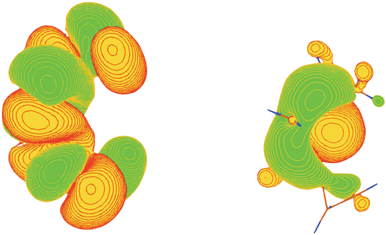Localized optimized orbitals, coupled cluster theory, and chiroptical response properties
Abstract
The impact of orbital localization on the efficiency and accuracy of the optimized-orbital coupled cluster model is examined for the prediction of chiroptical properties, in particular optical rotation. The specific rotations of several test cases—(P)-[4]triangulane,

- This article is part of the themed collection: Fragment and localized orbital methods in electronic structure theory

 Please wait while we load your content...
Please wait while we load your content...